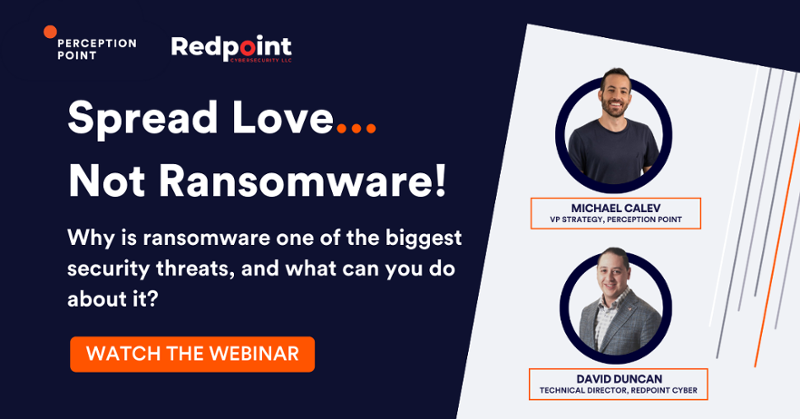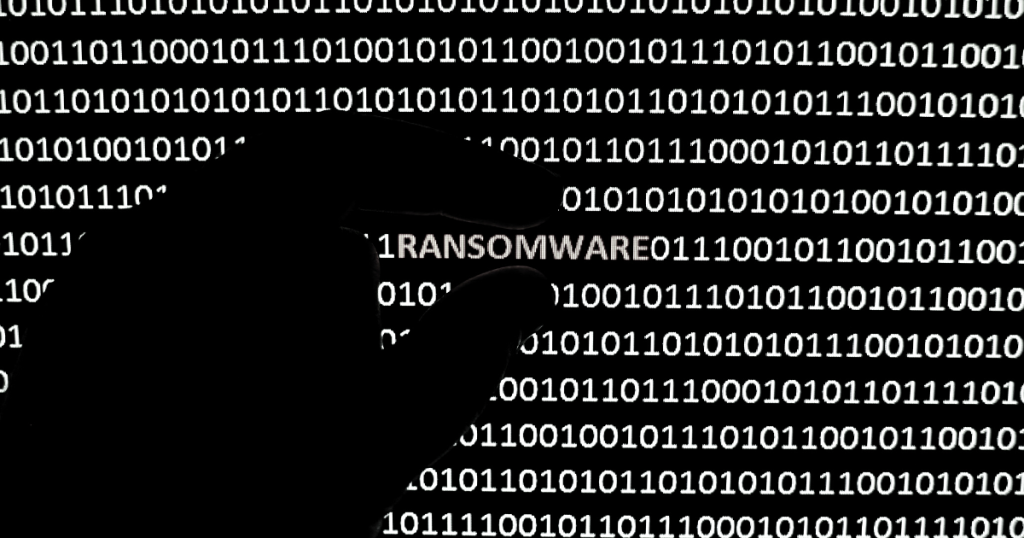Ransomware is a type of malicious software that infects a victim’s computer or network and encrypts their files or restricts access to their system. The attacker then demands a ransom payment from the victim in exchange for restoring access to the data or system.
Ransomware attacks can be delivered through various means, such as email attachments, compromised websites, or via exploiting vulnerabilities in software. Once the ransomware is installed on the victim’s computer, it quickly spreads throughout the system and encrypts files, making them inaccessible. The attacker then typically demands payment, typically in the form of cryptocurrency, in exchange for providing a decryption key to unlock the encrypted data.
Ransomware attacks can cause significant harm to businesses, individuals, and even critical infrastructure, often resulting in lost productivity, financial loss, and reputational damage. It is important to maintain regular backups of important data and to implement security measures, such as strong passwords and up-to-date software, to prevent and mitigate the impact of ransomware attacks.
This is part of an extensive series of guides about hacking.
Ransomware is a type of malicious software that infects a victim’s computer or network and encrypts their files or restricts access to their system. The attacker then demands a ransom payment from the victim in exchange for restoring access to the data or system.
Ransomware attacks involve several stages, including infection, data encryption, and ransom demands.
There are different types of ransomware, each with its unique characteristics and methods of attack. These types include:
– Crypto ransomware
– Locker ransomware
– Double extortion ransomware
– Ransomware as a Service (RaaS)
Early detection is critical to keeping data as safe as possible. Here are the three main ways to detect ransomware:
– Signature-Based Detection
– Behavior-Based Detection
– Traffic-Based Detection
Given the complexity of ransomware attacks, it is imperative that companies follow these best practices to help defend against sophisticated attackers.
– Keep Your Data Backed Up
– Whitelist Applications
– Implement Network Segmentation
– Protect Your Endpoints
– Improve Your Email Security
In this article

Tal ZamirCTO, Perception Point
Tal Zamir is a 20-year software industry leader with a track record of solving urgent business challenges by reimagining how technology works.
TIPS FROM THE EXPERTS
- Adopt a zero-trust architecture Implement a zero-trust model that requires verification for every user and device attempting to access resources on your network, minimizing the risk of unauthorized access.
- Regularly conduct threat hunting Proactively search for indicators of compromise (IoCs) within your network rather than relying solely on automated detection systems. This can help uncover sophisticated threats early.
- Enforce least privilege access Ensure that users and applications have the minimum level of access necessary to perform their functions, reducing the potential impact of compromised accounts.
- Create and test an incident response plan Develop a comprehensive incident response plan and conduct regular simulations to ensure your team is prepared to respond swiftly and effectively.
How Ransomware Attacks Work
Ransomware attacks involve several stages, including infection, data encryption, and ransom demands. The following is a more detailed explanation of each stage.
1. Infection and Spread
Ransomware typically spreads through social engineering techniques or vulnerabilities in software. Attackers often use phishing emails with malicious attachments or links to infect victims’ systems. These emails may appear to be legitimate and come from a trusted source, such as a bank or a delivery company.
Once the victim opens the attachment or clicks the link, the malware is installed on their computer. Ransomware can also be spread through vulnerabilities in software that have not been patched, such as through remote desktop protocols (RDP), unsecured websites, or outdated software.
2. Data Encryption
Once the malware has infected the victim’s computer, it starts encrypting files and folders on the hard drive, making them inaccessible to the victim. The ransomware often uses a strong encryption algorithm that requires a unique decryption key to unlock the data. Some ransomware variants can also encrypt files on network drives or cloud storage, making it even harder to recover the data.
3. Ransom Demands
The attackers behind ransomware attacks typically demand payment in exchange for providing the decryption key to unlock the encrypted data. The ransom demand can vary, ranging from a few hundred dollars to tens of thousands of dollars, and is often paid in cryptocurrencies such as Bitcoin, which are difficult to trace.
Attackers may also threaten to delete or publish the victim’s data if the ransom is not paid within a specified time frame. The ransom note often includes detailed instructions on how to make the payment and how to obtain the decryption key.
Paying the ransom is not recommended, as there is no guarantee that the attackers will provide the decryption key, and it can encourage further attacks. Instead, victims are advised to report the attack to law enforcement, isolate the infected system from the network, and restore the system from backups if available.
Types of Ransomware
There are different types of ransomware, each with its unique characteristics and methods of attack:
- Crypto ransomware: This is the most common type of ransomware. It encrypts the victim’s files and demands a ransom payment in exchange for the decryption key. Crypto ransomware is usually distributed via email attachments or downloads from compromised websites. The encryption used by crypto ransomware is often very strong, making it difficult to recover data without the decryption key.
- Locker ransomware: Also known as screen locker, this technique blocks access to the victim’s system or specific files, rather than encrypting them. Locker ransomware typically displays a message on the victim’s screen that demands payment in exchange for restoring access. Locker ransomware can be distributed through infected websites or phishing emails.
- Double extortion ransomware: This technique combines data encryption with the threat of data theft. The attackers first encrypt the victim’s data and then threaten to publish the data online if the ransom is not paid. Double extortion ransomware often targets businesses, where the publication of sensitive data can have significant financial and reputational consequences.
- Ransomware as a Service (RaaS): This is a type of attack where the creators of the malicious software rent or sell the ransomware to other criminals. RaaS makes it easier for cybercriminals with little technical knowledge to carry out ransomware attacks. RaaS operators provide the software and infrastructure required to carry out the attack and take a percentage of the ransom payment. RaaS has made it easier and cheaper for criminals to carry out ransomware attacks, leading to an increase in the number of attacks.
Recent Examples of Ransomware Attacks
Hacker groups carried out several high-profile ransomware attacks in 2022, targeting hospitals, schools, and cloud providers. These are some of the major ransomware attacks.
NVIDIA Attack
NVIDIA is a leading manufacturer of semiconductors. In February, 2022, it suffered a ransomware attack that leaked proprietary data and employee credentials online. The attack was carried out by the Lapsus$ group, which claimed it had accessed 1TB of company data, threatening to leak it online. The attackers demanded a ransom payment of $1 million in addition to a portion of an unspecified fee.
According to media reports at the time, NVIDIA’s internal systems had been compromised, resulting in some business areas being taken offline for two days. However, NVIDIA later said that the ransomware attack did not affect its operations.
Costa Rican Government
This attack received a lot of attention because it was the first time that a government declared a state of emergency due to a cyber attack. The Costa Rican government experienced a wave of ransomware attacks starting in April, 2022, crippling the finance ministry’s operations. It impacted both government services and private companies in the import and export sector. The Conti group claimed responsibility for the initial attack and demanded a $10 million ransom from the government, later raising the demand to $20 million.
Another attack carried out by HIVe hit the country in late May. It targeted Costa Rica’s healthcare system and impacted the national social security fund. Healthcare services were taken offline, impacting many Costa Rican citizens.
Rackspace
In December, 2022, the technology company and cloud service provider Rackspace suffered a major ransomware attack that caused significant disruptions and outages across its Hosted Exchange cloud services. Customers could not access their email services, forcing Rackspace to migrate its users to Microsoft 365.
Rackspace later confirmed that the ransomware attack had been carried out using the new OWASSRF exploit technique. This technique can bypass the mitigation measures for vulnerabilities like ProxyNot Shell in the Microsoft Exchange server. OWASSRF was originally identified and reported by CrowdStrike, which helped Rackspace respond to the security incident.
GCOE Attack
The GCOE (Glenn County Office of Education), which covers eight school districts in California, was one of many victims of a ransomware attack that affected educational organizations. In May, 2022, the Office suffered an attack by the Quantum group that blocked network access.
The GCOE reportedly paid a ransom of $400,000 to the attackers. In October, the Office started notifying students and teachers of the data breach, informing them that their personal data, such as names and Social Security numbers, may have been stolen.
Cisco Attack
The networking and cybersecurity company Cisco reported a ransomware by the Yanluowang group in May, 2022. The attackers used an employee’s compromised credentials to access the company’s systems. Cisco Talos’ head of outreach, Nick Biasini, later described the attack, revealing that a vishing campaign had allowed the group to bypass Cisco’s MFA settings.
However, the company reportedly identified the intrusion before the attackers could deploy the malware. In September, Cisco confirmed that the data published on Yanluowang’s site was the same as the data they had already disclosed.
Ransomware Detection Techniques
Early detection is critical to keeping data as safe as possible. Here are the three main ways to detect ransomware.
Signature-Based Detection
Malware signatures are unique identifiers or patterns that are associated with known malware. This detection technique involves using anti-virus software that scans files and compares them to known signatures of malware. If the file matches a known signature, the anti-virus software flags it as malicious. This technique is effective in detecting known ransomware variants, but it is less effective against new or modified variants.
Behavior-Based Detection
This technique involves monitoring system behavior for unusual or suspicious activity, such as the encryption of large numbers of files or network connections to suspicious domains. Behavioral detection is more effective against new and modified variants of ransomware, as it does not rely on known signatures. However, it can also produce false positives, flagging legitimate activity as suspicious.
Traffic-Based Detection
This technique involves monitoring network traffic for abnormal patterns or volume, such as a sudden increase in outgoing traffic. This technique can detect ransomware that tries to connect to external command and control servers or that attempts to exfiltrate data. However, this technique requires sophisticated network monitoring tools and can produce false positives.
In practice, the most effective ransomware detection strategy involves a combination of these techniques. Detecting ransomware requires a multi-layered approach that combines different detection techniques and best practices to minimize the impact of ransomware attacks.
Best Practices for Ransomware Protection and Prevention
Given the complexity of ransomware attacks, it is imperative that companies follow these best practices to help defend against sophisticated attackers.
Keep Your Data Backed Up
By regularly backing up important data, individuals and organizations can recover their data if it is encrypted or lost due to a ransomware attack. Backups should be stored in a separate location from the primary data and should be regularly tested to ensure their integrity. Ideally, there should be an offline copy of the data.
This practice ensures that even if the data is encrypted or stolen, it can be recovered without paying the ransom. Regular backups can also be used to recover from other types of data loss, such as hardware failure or user error.
Whitelist Applications
Application blacklisting and whitelisting are security measures used to control what software can run on a system. Blacklisting involves blocking known malicious applications, while whitelisting only allows approved applications to run.
Whitelisting is more effective for preventing ransomware attacks because it blocks all unknown or unauthorized applications, including new and modified variants of ransomware. With blacklisting, attackers can use modified variants of ransomware that are not yet known and, therefore, not blocked.
Implement Network Segmentation
Network segmentation involves dividing a network into smaller sub-networks or segments, which can be independently managed and secured. Each segment is isolated from the others, reducing the impact of a security breach.
By segmenting the network, attackers are limited in their ability to move laterally across the network and access sensitive data or systems. This ensures that even if ransomware infiltrates the system, it will be harder for the attacker to access critical data, thus mitigating the impact of the attack.
Protect Your Endpoints
Endpoint protection is a security solution that is designed to protect endpoints, such as desktops, laptops, and mobile devices, from a range of security threats, including malware and ransomware. It typically includes features such as antivirus, firewall, intrusion prevention, and other security controls that are designed to protect against a range of threats. Endpoint protection solutions can also include advanced threat detection and response capabilities, which can detect and respond to ransomware attacks in real-time, minimizing the impact of an attack.
Improve Your Email Security
Many organizations remain vulnerable to ransomware despite using email security technologies such as sandboxing. These technologies are often outdated and cannot keep up with sophisticated hacking techniques. Traditional email security solutions are often slow and lack the scalability of an advanced email security solution.
Modern email security solutions should include the following capabilities to prevent ransomware:
- Dynamic scanning: Static malware scanning and simple antivirus tools rely on databases of known threats. Dynamic scans actively detonate files and URLs in a sandboxed environment to detect unknown malicious code.
- Recursive unpacking: It is important to detect threats at every level to prevent evasion and find deeply buried malicious components within the content.
- Speed and scalability: Another challenge is to accommodate the required scale and speed of the cloud. Legacy solutions cannot always protect larger workloads, allowing attackers to exploit them.
- Engine optimization: The email engine should be continuously optimized to protect against new threats and prevent performance degradation. This requires skilled security teams and agile email security solutions.
Learn more in our detailed guide to Ransomware prevention.
Ransomware Prevention with Perception Point
Perception Point delivers one platform that prevents malware, ransomware, APTs and zero-days from reaching your end users.
Advanced Email Security is an integrated cloud email security solution (ICES) that can replace SEGs. The solution cloud-native SaaS solution protects your organization against all threats using 7 layers of advanced threat detection layers to prevent malicious files, URLs, and social-engineering based techniques.
Advanced Browser Security adds enterprise-grade security to your organizations native browsers. The managed solution fuses browser protection technology with multi-layer advanced threat prevention engines which delivers the unprecedented ability to detect and remediate all malicious threats from the web, including phishing, ransomware, malware, APTs, and more. Multi-layered static and dynamic detection capabilities instantly detect and block access to malicious/phishing websites and prevent malicious file downloads of ransomware, malware, and APTs.
Advanced Threat Protection for Cloud Collaboration, File Sharing and Storage Applications, such as Microsoft 365 applications (OneDrive, SharePoint, Teams), Google Drive Box, AWS S3 buckets, Zendesk, Salesforce, and any of the other hundreds of apps out there, protects your organization with near real-time dynamic scanning. It does not tamper with files and does not impede on productivity.
An all-included managed Incident Response service is available for all customers 24/7 with no added charge. Perception Point’s team of cybersecurity experts will manage incidents, provide analysis and reporting, and optimize detection on-the-fly. The service drastically minimizes the need for internal IT or SOC team resources, reducing the time required to react and mitigate web-borne attacks by up to 75%.
Get a demo today!

See Our Additional Guides on Key Hacking Topics
Together with our content partners, we have authored in-depth guides on several other topics that can also be useful as you explore the world of hacking.
Malware
Authored by Perception Point
Phishing
Authored by Perception Point
Advanced Persistent Threat
Authored by Cynet
























